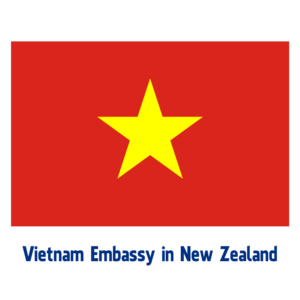
How to Apply for a Vietnam Visa from Malaysia
Vietnam, a vibrant Southeast Asian nation renowned for its stunning landscapes, rich culture, and bustling cities, welcomes visitors from around the world. However, for Malaysians seeking to experience the allure of Vietnam, obtaining a visa is a crucial step in their travel planning. The Vietnamese government has established a visa policy to regulate entry into the country, and it’s essential for Malaysian travelers to understand the regulations and requirements.
Introduction to Vietnam Visa from Malaysia

Traveling to Vietnam can be an exciting adventure filled with breathtaking scenery, delicious cuisine, and a deep dive into a rich cultural heritage. However, before embarking on this journey, it is vital for Malaysian citizens to familiarize themselves with the visa application process. Understanding the types of visas available, eligibility criteria, and application procedures will ensure a smooth travel experience. This article serves as a comprehensive guide to help Malaysians navigate the complexities of obtaining a Vietnam visa.
Overview of Vietnam’s Visa Policy
Vietnam’s visa policy is designed to manage the flow of foreign visitors into the country while ensuring national security and immigration control. The policy outlines various visa categories based on the purpose of travel, including tourism, business, transit, and more. For Malaysian travelers, the good news is that Vietnam offers several options, including e-visas and visa-on-arrival services, making it relatively easy to obtain the necessary documentation for entry.
The visa policy is subject to change, so it is advisable for travelers to check the official Vietnamese government website or consult the nearest Vietnamese embassy for the most up-to-date information. By staying informed about the latest visa regulations, Malaysian travelers can avoid potential issues during their trip.
Importance of Understanding Visa Requirements
Understanding the nuances of Vietnam’s visa policy is paramount for a smooth travel experience. Failing to meet the necessary criteria can lead to delays, inconveniences, and even refusal of entry. Navigating the visa application process proactively can save you time, stress, and potential problems during your trip.
Moreover, being aware of the specific requirements for each type of visa ensures that travelers submit complete applications, minimizing the risk of rejection. Knowledge of the visa process also allows travelers to plan their itineraries effectively, ensuring they have ample time to explore all that Vietnam has to offer.
Types of Vietnam Visas Available
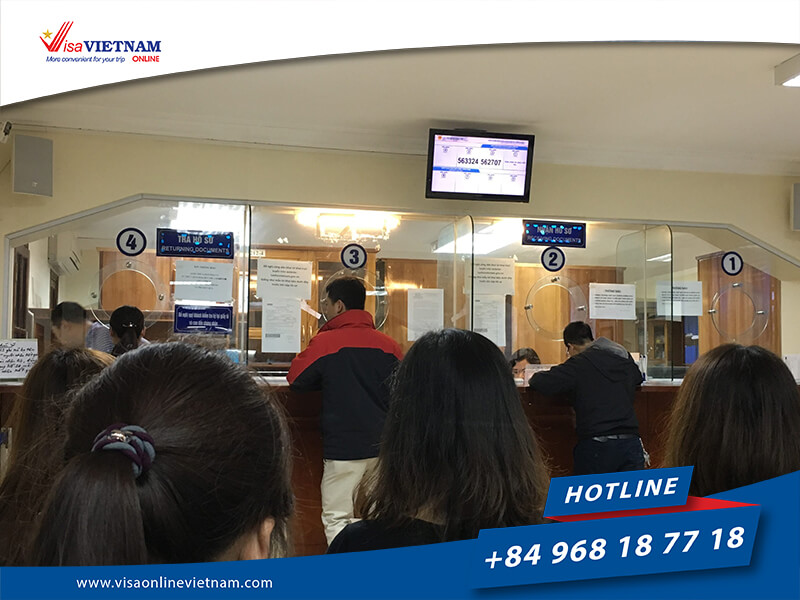
Depending on the purpose of your visit, there are several types of Vietnam visas available to Malaysian citizens. Each visa type comes with its own set of requirements and conditions, making it essential for travelers to choose the right one for their needs.
Tourist Visa
The tourist visa is the most common type for leisure travelers visiting Vietnam. It allows visitors to explore the country’s diverse landscapes, historical sites, and vibrant cities. Tourist visas are typically granted for a specific period, ranging from 1 to 3 months, depending on the chosen visa type.
Malaysian citizens can apply for a single-entry or multiple-entry tourist visa. A single-entry visa permits one entry into Vietnam, while a multiple-entry visa allows travelers to leave and re-enter the country within the visa’s validity period. This flexibility is particularly beneficial for those who plan to visit neighboring countries during their stay in Vietnam.
Business Visa
For Malaysians engaged in business activities in Vietnam, a business visa is required. This visa permits business meetings, contract negotiations, and other professional endeavors within the country. It’s important to note that the specific requirements for a business visa may vary depending on the nature of the business activities.
To apply for a business visa, travelers must provide a business invitation letter from a Vietnamese company, along with details of their intended activities in Vietnam. This visa type is usually valid for a longer duration than a tourist visa, accommodating the needs of business professionals.
Transit Visa
If you are transiting through Vietnam en route to another destination, a transit visa may be necessary. This visa allows you to stay in Vietnam for a limited period while you wait for your connecting flight. Transit visa requirements vary depending on your nationality and the duration of your transit.
It’s essential to check whether a transit visa is required based on your travel itinerary. In some cases, if your layover is short and you remain in the airport’s transit area, a visa may not be needed. However, if you plan to leave the airport during your layover, securing a transit visa is crucial.
E-Visa Options
Vietnam offers an online e-visa service, which allows travelers to apply for a visa conveniently online. The e-visa is a single-entry visa valid for 30 days and can be used for tourism, business, or visiting family and friends. The e-visa application process is typically faster and easier than traditional visa applications, making it a popular choice for many travelers.
To apply for an e-visa, travelers need to visit the official Vietnamese e-visa website, fill out the application form, and upload the required documents. Once approved, the e-visa will be sent via email, allowing travelers to print it and present it upon arrival in Vietnam.
Eligibility Criteria for Malaysian Citizens
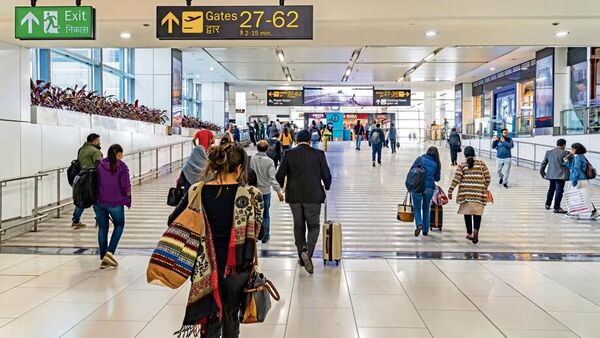
For Malaysians seeking to travel to Vietnam, it’s crucial to meet the eligibility criteria for the intended visa type. General requirements apply to all visa categories, while specific conditions may vary based on the visa type selected.
General Requirements
Regardless of the visa type, most Malaysian citizens must meet these general requirements:
- Valid passport: Your passport must be valid for at least six months beyond your intended stay in Vietnam.
- Visa application form: Complete the application form accurately and truthfully, providing all required information.
- Passport-sized photographs: You need two recent passport-sized photographs meeting specific requirements.
- Proof of onward travel: Provide evidence of your onward travel arrangements, such as airline tickets, to demonstrate your intent to depart Vietnam within your authorized stay.
These general requirements serve as the foundation for any visa application, ensuring that travelers have the necessary documentation to support their requests.
Specific Conditions for Different Visa Types
Specific requirements may apply to each visa type:
- Tourist Visa: You’ll typically need to provide proof of accommodation (hotel reservation, homestay booking) and sufficient funds to cover your expenses during your stay in Vietnam.
- Business Visa: A business invitation letter from a Vietnamese company and a detailed itinerary outlining your business activities are usually required. This documentation helps authorities verify the legitimacy of your business intentions.
- Transit Visa: You’ll need to provide evidence of your connecting flight and visa requirements for your final destination. This information is crucial for immigration officials to assess your eligibility for a transit visa.
By understanding these specific conditions, travelers can prepare their applications accordingly, reducing the likelihood of complications during the visa approval process.
How to Apply for a Vietnam Visa from Malaysia
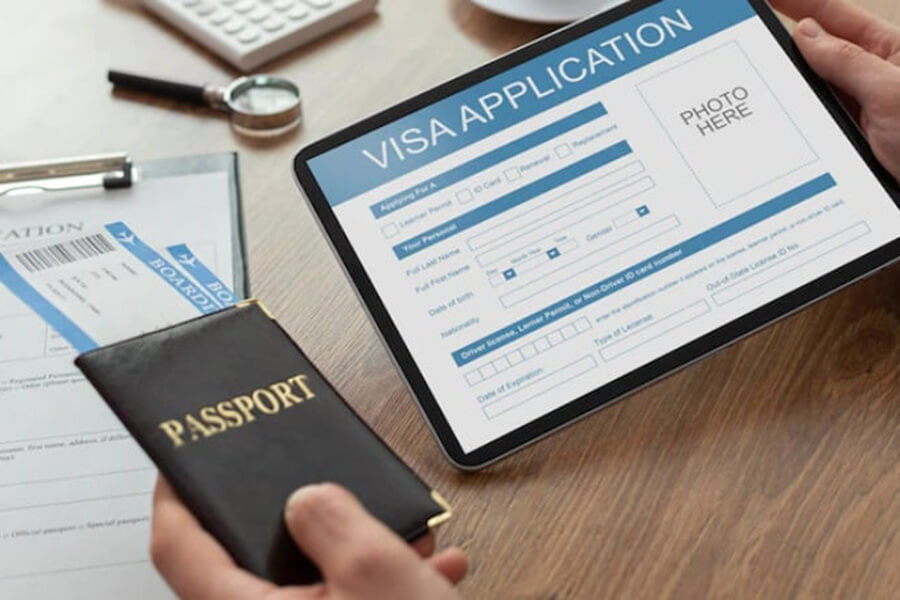
There are several ways to apply for a Vietnam visa from Malaysia, each offering different levels of convenience and efficiency. Travelers can choose between online applications, applying through the embassy, or utilizing the visa-on-arrival option.
Online Application Process
Applying for a Vietnam visa online is typically the most convenient and efficient method. The Vietnamese government website provides a straightforward online application portal. However, you should ensure the website is the official government one to avoid fraudulent schemes.
Step-by-step online application guide:
- Visit the official Vietnam e-visa website: Navigate to the designated government site for e-visa applications.
- Complete the application form: Fill in all required information accurately, including passport details, travel dates, and purpose of visit.
- Upload supporting documents: Provide scanned copies of your passport, photographs, and other relevant documents, ensuring they meet the specific requirements.
- Pay the visa fee: You can typically pay the visa fee online using a credit card or debit card.
- Submit your application: Review your application thoroughly before submitting it.
- Track your application status: You can usually monitor the progress of your application online.
- Receive your visa approval: If approved, you will receive an electronic visa via email. Print the e-visa and present it at the Vietnam airport upon arrival.
This online process streamlines the application experience, allowing travelers to complete their visa requests from the comfort of their homes.
Applying Through the Embassy
If the e-visa option isn’t suitable for your specific travel plans or you prefer a more traditional approach, you can apply for a visa through the Vietnamese Embassy in Kuala Lumpur.
Embassy application process:
- Contact the embassy: Obtain information about visa application procedures and requirements.
- Download the visa application form: Fill out the application form accurately and completely.
- Collect necessary documents: Prepare all required documents, including your passport, photographs, financial proof, and travel itinerary.
- Submit your application in person: Visit the embassy during their designated working hours to submit your application and supporting documents.
- Pay the visa fee: Pay the applicable visa fee in cash or via bank transfer.
- Receive your visa: Your visa will be processed and issued by the Vietnamese Embassy.
Applying through the embassy may take longer than the online process, but it provides an opportunity for direct communication with embassy staff, which can be beneficial for addressing any concerns or questions.
Visa on Arrival: What You Need to Know
For certain nationalities, including Malaysians, Vietnam offers a visa-on-arrival option at designated international airports. You can apply for a visa on arrival at the airport, but it’s critical to meet the necessary requirements.
Required documents:
- Visa approval letter: You must obtain a visa approval letter from the Vietnamese Immigration Department in advance.
- Required documents: Carry your passport, visa approval letter, two passport-sized photographs, and proof of onward travel.
- Visa fee payment: You will need to pay the designated visa fee in cash at the airport upon arrival.
Note: While a visa on arrival is a convenient option, it’s essential to confirm its availability before your trip. The availability of visa on arrival can change, and it’s best to check with the Vietnamese Embassy in Malaysia for the latest information.
Required Documents for Visa Application
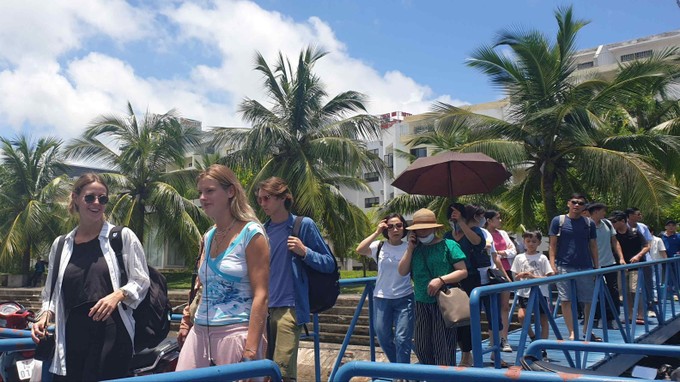
To ensure a smooth and successful visa application process, ensure you gather and arrange all necessary documents meticulously. Each visa type may have slightly different requirements, but certain documents are universally required.
Passport Validity and Specifications
Your passport is the most critical document for your visa application. Ensure that it meets the following specifications:
- Valid for at least six months: Your passport must be valid for at least six months beyond your intended stay in Vietnam.
- At least two blank pages: Have at least two blank pages available in your passport for visa stamping.
- Clean and undamaged: Ensure your passport is clean and free from any damage, including torn pages or missing stamps.
A valid passport is essential for both the visa application process and your entry into Vietnam.
Photographs and Other Supporting Documents
Photographs play a significant role in the visa application process. Ensure that you adhere to the following guidelines:
- Passport-sized photographs: Two recent passport-sized photographs are typically required. These photographs must meet specific specifications regarding size, background, and attire. You can find detailed requirements on the Vietnamese Embassy website or the online visa application platform. In addition to photographs, you may need to provide other supporting documents, such as:
- Proof of accommodation: A confirmed hotel booking or homestay reservation is usually required for a tourist visa, proving your accommodation arrangements in Vietnam.
- Financial proof: Provide evidence of sufficient funds to support your expenses during your stay in Vietnam. This could include bank statements, credit card statements, or traveler’s checks.
Financial Proof and Travel Itinerary
Providing evidence of financial capabilities is crucial for ensuring your visa application’s success. This document serves as assurance to Vietnamese authorities that you have the necessary financial means to support yourself while in the country. Acceptable documents include bank statements, credit card statements, traveller’s cheques, or a combination of these, demonstrating sufficient funds.
A well-structured travel itinerary is essential for visa applications. It outlines your planned activities, including your arrival and departure dates, transportation methods, and destinations. A detailed itinerary strengthens your application by showing a clear purpose and timeframe for your visit, contributing to a positive impression on immigration officials.
Processing Time for Vietnam Visa

The processing time for a Vietnam visa can vary depending on the application method and chosen visa type. Understanding the expected timelines can help travelers plan their trips more effectively.
Standard Processing Times
- Online application: Expect processing times ranging from 3 to 7 business days for e-visas. This expedited timeline makes the e-visa option attractive for last-minute travelers.
- Embassy application: Applying through the embassy may take longer, potentially extending to 10 to 15 business days. It’s advisable to apply well in advance to accommodate any unforeseen delays.
Travelers should factor in these processing times when planning their itineraries to avoid any last-minute rush.
Expedited Services
To expedite your visa application process, you may consider paying for expedited services if available. These services often shorten the processing time, typically by a few days. However, expedited services may come with additional fees, so travelers should weigh the benefits against the costs.
When opting for expedited services, it’s essential to communicate clearly with the visa processing authority to ensure that your application receives priority attention.
Visa Fees and Payment Methods
The cost of a Vietnam visa depends on your nationality, the type of visa you choose, and the application method. Understanding the breakdown of costs and accepted payment methods is crucial for a seamless application experience.
Breakdown of Costs
- E-visa: The e-visa fee is typically fixed for all nationalities, usually around USD 25. This flat rate simplifies budgeting for travelers.
- Visa on arrival: The fee for a visa on arrival varies depending on your nationality and the duration of your stay, ranging from USD 25 to USD 50. It’s essential to check the specific fee applicable to your situation before traveling.
Travelers should be prepared to pay the visa fee upfront, as it is a standard requirement for all visa applications.
Accepted Payment Methods
Payment methods for visa fees may vary based on the application method. For online applications, payments are typically made through credit or debit cards directly on the official website. When applying through the embassy, payment may be accepted in cash or via bank transfer.
It’s advisable to confirm the accepted payment methods with the respective authority to avoid any issues during the application process.
Tips for a Smooth Visa Application Experience
Navigating the visa application process can sometimes be daunting, but with careful preparation and attention to detail, travelers can ensure a smooth experience. Here are some helpful tips to keep in mind.
Double-Check Your Documents
Before submitting your visa application, take the time to double-check all your documents. Ensure that your passport is valid, photographs meet the specified requirements, and all supporting documents are complete and accurate. Missing or incorrect information can lead to delays or rejection of your application.
Additionally, make copies of all submitted documents for your records. Having a backup can be helpful in case any issues arise during the processing of your visa.
Keep Track of Application Status
After submitting your application, it’s essential to keep track of its status. Most online application platforms allow you to monitor the progress of your visa request. If you applied through the embassy, inquire about the estimated processing time and follow up if necessary.
Staying informed about your application status can alleviate anxiety and help you plan your travel arrangements accordingly.
Notes
As you prepare for your trip to Vietnam, there are a few important notes to keep in mind regarding visa policies and requirements.
Importance of Accurate Information
Providing accurate information on your visa application is crucial. Any discrepancies or errors can lead to delays or denial of your visa. Be honest and thorough when filling out the application form, and ensure that all supporting documents align with the information provided.
If you have any doubts or questions about the application process, don’t hesitate to reach out to the Vietnamese embassy or consulate for clarification.
Staying Updated on Visa Policies
Visa policies can change frequently, so it’s essential to stay updated on the latest regulations. Before your trip, check the official Vietnamese government website or contact the embassy to confirm the current visa requirements and processes.
Being informed about any changes can prevent unexpected surprises during your travel preparations.
Mistakes to Avoid
While applying for a Vietnam visa, there are common mistakes that travelers should avoid to ensure a successful application process.
Common Errors in Application Forms
One of the most frequent issues encountered during visa applications is errors in the application forms. Simple mistakes, such as misspelled names or incorrect passport numbers, can lead to complications. Always review your application carefully before submission.
Additionally, ensure that you are using the correct form for the specific visa type you are applying for. Using the wrong form can result in delays or rejection.
Misunderstanding Visa Types
Another common mistake is misunderstanding the type of visa required for your travel purpose. Take the time to research the different visa categories and select the one that aligns with your travel intentions. Whether you’re traveling for tourism, business, or transit, choosing the appropriate visa is crucial for a hassle-free experience.
Ignoring Validity Periods
Travelers should also pay close attention to the validity periods of their visas. Ensure that your visa covers the entire duration of your stay in Vietnam. Overstaying your visa can lead to fines, deportation, or future travel restrictions.
Plan your travel itinerary carefully to avoid any issues related to visa validity.
Frequently Asked Questions
As travelers prepare for their journey to Vietnam, they often have questions regarding the visa application process. Here are some frequently asked questions and their answers.
Can I extend my visa while in Vietnam?
Yes, it is possible to extend your visa while in Vietnam. However, the extension process can be complex and may require you to visit the local immigration office. It’s advisable to start the extension process well before your visa expires to avoid any penalties.
What should I do if my visa application is rejected?
If your visa application is rejected, you will typically receive a notification explaining the reason for the denial. Depending on the circumstances, you may be able to reapply after addressing the issues outlined in the rejection notice. Consult the embassy or consulate for guidance on the next steps.
Are there any special considerations for students or workers?
Students and workers may have specific visa requirements based on their status. Students wishing to study in Vietnam must apply for a student visa, while workers must secure a work visa. It’s essential to consult the relevant authorities to understand the specific requirements for these visa types.
Conclusion
In conclusion, obtaining a Vietnam visa from Malaysia is a crucial step for travelers looking to explore the beauty and culture of this Southeast Asian gem. By understanding the various visa types, eligibility criteria, and application processes, Malaysians can navigate the visa landscape with confidence.
Planning ahead, double-checking documents, and staying informed about visa policies will contribute to a smooth travel experience. As you embark on your journey to Vietnam, remember to embrace the adventure and create lasting memories in this enchanting country.

